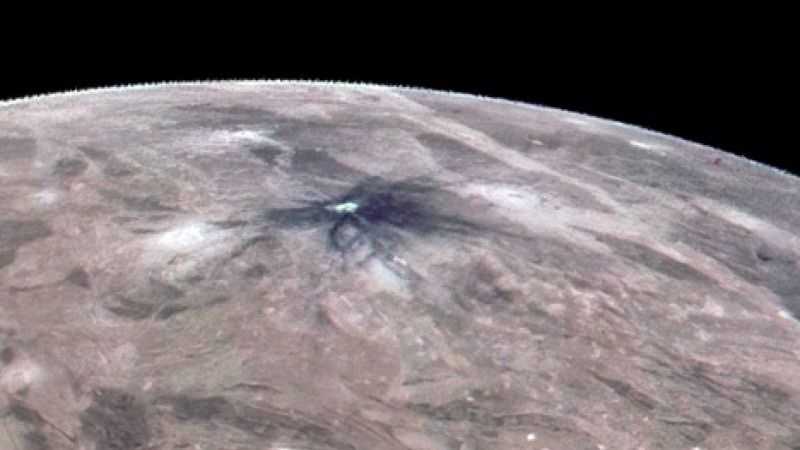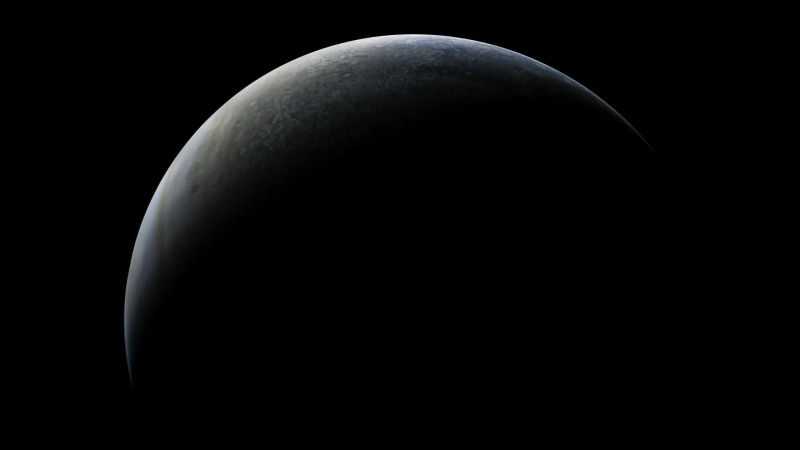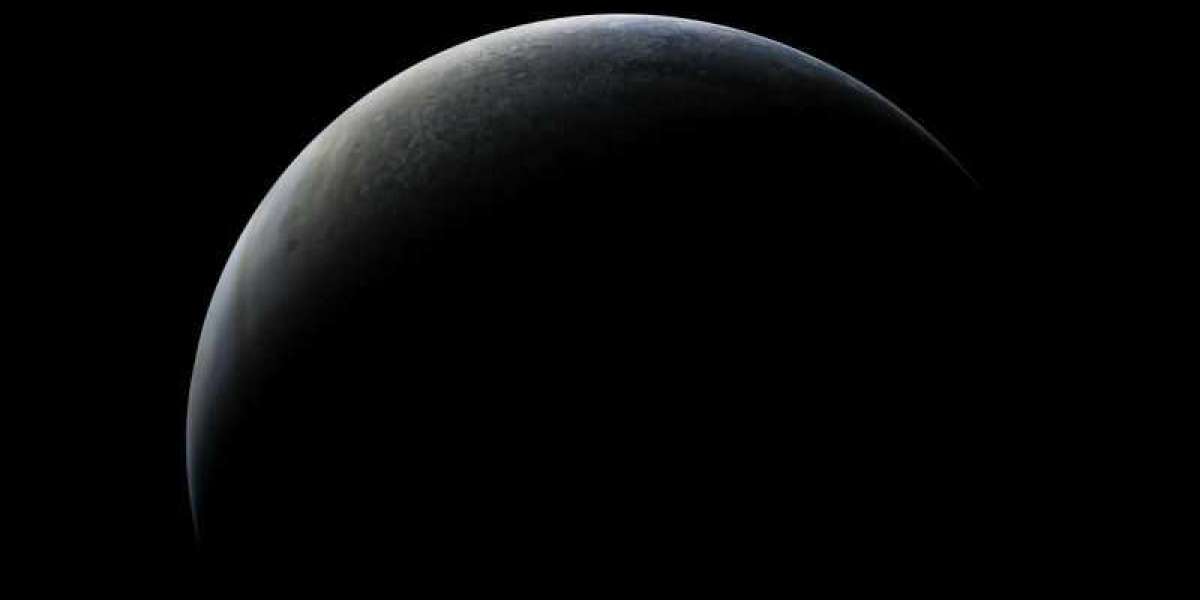The Juno spacecraft's data has revealed magnificent new photographs of Jupiter and its moon Ganymede.
Juno project team members revealed photographs of a massive crater on Ganymede and a backlit picture of Jupiter that the spacecraft recorded during its dips in and out of Jupiter's radiation-filled environment in a blog post on Monday (Feb. 14).
"If you could ride along with NASA’s Juno spacecraft as it approaches Jupiter during one of its regular close passes by the giant planet, you would be treated to a striking vista similar to this one," the website stated about the Jupiter images.

Juno passed only 650 miles (1,046 kilometers) over Ganymede's surface during a June 2021 pass, when the photograph (above) was taken. Using data from the JunoCam camera, citizen scientist Thomas Thomopoulos developed this enhanced-color image.
With darker material surrounding it released when a tiny asteroid smashed into the surface, the enormous crater Kittu is roughly 9 miles (15 kilometers) broad and has darker material surrounding it.
"Most of Ganymede's craters have bright rays extending from the impact scar, but about one percent of the craters have dark rays," the blog post stated.
"Scientists believe that contamination from the impactor produced the dark rays," the post added. "As time passes, the rays stay dark because they are a bit warmer than the surroundings, so ice is driven off to condense on nearby colder, brighter terrain."

The backlit image of Jupiter was generated using raw data from the JunoCam instrument, which included seven photographs acquired on Jan. 12 during Juno's 39th close approach of Jupiter.
Because Jupiter's orbit is constantly beyond Earth's and thus only visible (from our planet) in full sunlight from the sun, NASA observed that this image of Jupiter is unachievable from Earth, even via a telescope.



